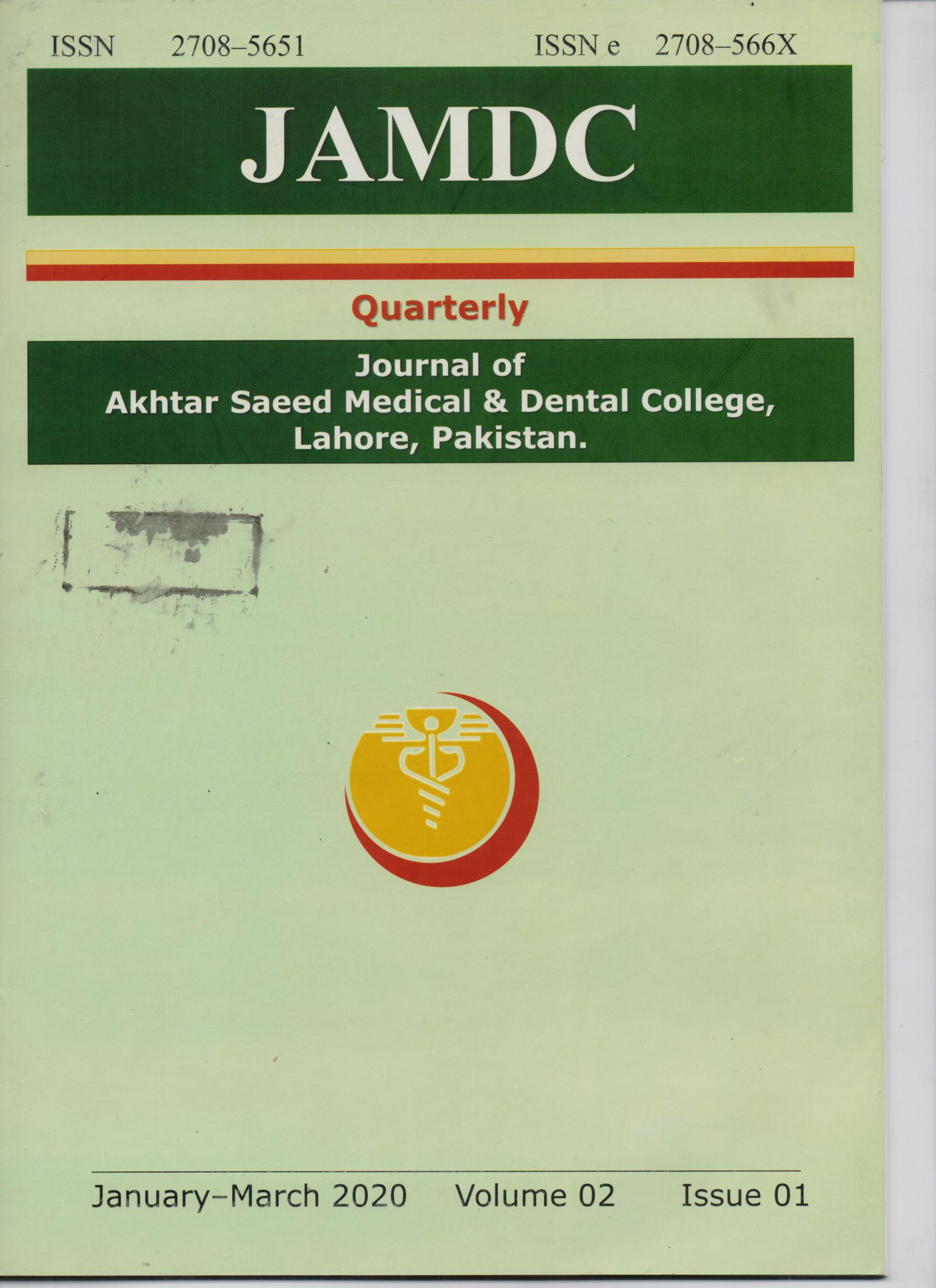COMPARISON OF INTER-CANINE AND INTER-MOLAR WIDTHS IN ANGLE'S CLASS I, II AND III MALOCCLUSIONS; STUDY OF LOCAL POPULATION OF LAHORE
Main Article Content
Abstract
Objective:
To assess the inter-canine and inter-molar widths amongst Angle's class I, II, and III Malocclusion groups.
Material and Methods:
This study was carried out at Children's Hospital and Institute of Child Health Lahore. Fifty patients within the age range of 10-15 years were selected for study with all three classes of Malocclusion. Arch width measurements were made using dental casts of patients, and the findings were noted in specially designed Performa. Data was analyzed using SPSS 20.
Results:
Mean maxillary inter-molar widths were 45.2mm, 46 mm, 46.02mm, 46.8mm, and 44.1 mm for class I, class II div 1, class II div 2, class II sub-div and class III groups respectively. Mean values for mandibular inter-molar widths were 42.7 mm, 44.09 mm, 44.6 mm, 43.5 mm, and 44.07 mm for class I, class II div 1, class II div 2, class II sub-div and class III groups respectively. Statistically insignificant differences were seen for the inter-molar widths of maxilla and mandible among the Malocclusion groups. Mean maxillary inter-canine widths were 31.8 mm, 32.6 mm, 33.0 mm, 32.0 mm and 30.7 mm for class I, class II div 1, class II div 2, class II sub-div and class III groups respectively. Mean mandibular inter-canine widths were found to be 25.00 mm, 26.7 mm, 27.7 mm, 26.5 mm and 26.0 mm for class I, class II div 1, class II div 2, class II sub-div and class III groups respectively. Significant difference was observed in the inter-canine widths of maxilla and mandible in Angle's Malocclusion.
Conclusion:
Inter-canine width was found to be least in class I and widest in class II div 2

